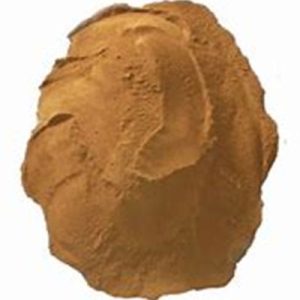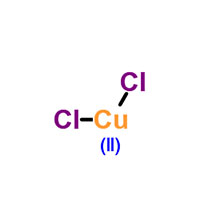Cupric Chloride Anhydrous
Specifications
| Cupric chloride anhydrous | Export High-purity | A.R. | Technical grade |
| Item | Index | Index | Index |
| Assay(as CuCl2))% | ≥99.9 | ≥99.0 | ≥98.0 |
| Copper content (asCu))% | ≥47.0 | ≥46.5 | ≥46.0 |
| Water insoluble% | ≤0.003 | ≤0.005 | ≤0.1 |
| Sulphates(SO4-)% | ≤0.003 | ≤0.003 | ≤0.03 |
| Fe% | ≤0.02 | ≤0.02 | ≤0.02 |
| Zn% | ≤0.02 | ≤0.02 | ≤0.02 |
| Fineness(80-mesh sieve residue) % | —— | —— | —— |
Packing& Storage
| Packing | 25kg woven bag, lined with double-layer plastic bag | |||||||
| Storage | 20℃, 2 years. | |||||||
| Shipping | Room temperature in China; may vary elsewhere | |||||||
General Information
1.1 Chemical & Physical Properties
| Common Names | Cupric Chloride Anhydrous | Cupric dichloride | ||||||
| Structure |  |
||||||
| CAS No. | 7447-39-4 | Boiling Point (℃) | 993°C/760mmHg | ||||
| Molecular Weight | 134.452 | Melting Point (℃) | 620 °C(lit.) | ||||
| Appearance | Yellow or yellow-brown crystalline powder with deliquescence. | Vapor Specific Gravity | N/A | ||||
| HS Code | 28274990 | Flash Point (℃) | N/A | ||||
| Solubility | Soluble in alcohol, acetone and ether | Autoignition Temperature (℃) | N/A | ||||
1.2 Safety Information
| Safety Phrases | S61-S57-S45-S37/39-S29-S26-S60-S36 | |
| RIDADR | UN 3264 8/PG 3 | |
| WGK Germany | 2 | |
| Packaging Group | III | |
| Hazard Class | 8 | |
| SYMPTOMS | PREVENTION | FIRST AID | |
| Inhalation | Cough. Sore throat. | Use local exhaust or breathing protection. | Fresh air, rest. |
| Skin | Redness. Burning sensation. Itching. | Protective gloves. | Remove contaminated clothes. Rinse and then wash skin with water and soap. |
| Eyes | Redness. Pain. | Wear safety goggles. | First rinse with plenty of water for several minutes (remove contact lenses if easily possible), then refer for medical attention. |
| Ingestion | Abdominal pain. Nausea. Vomiting. | Do not eat, drink, or smoke during work. Wash hands before eating. | Rinse mouth. Induce vomiting (ONLY IN CONSCIOUS PERSONS!). Refer for medical attention . |
1.3 Synthetic Route

